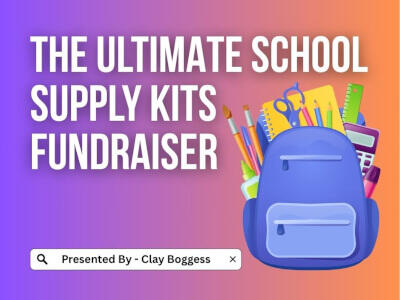
How the money game will transform your high school sale.
Unlike younger students, most high school students need additional motivation to go out and raise money for their group. They are a tough age group because they are either preoccupied with other obligations or skeptical about things in general. Therefore, getting students committed to selling requires additional effort and creativity.
We've attempted to help high school sponsors motivate their groups by offering more appealing incentives like sportswear or cash prize programs. While this has helped, the money game goes further to inspire students to be more productive. Several high school fundraisers succeeded because the money game was used and promoted correctly.
How the Money Game Sales Incentive Works
Once you've established your sales goal, you should be able to determine how many items each student needs to sell. Based on this number, you should then break the sale down into three stages:
- The day after the kickoff
- The midpoint of the sale
- Turn in day
Each stage should have an item goal to get students to work toward the end goal. For example, if you've determined your end goal for each seller to be ten items, you may want each seller to sell three items by day one and seven at the halfway point. Emphasize at your kickoff presentation that you will have each student's name in a drawing box, and you will draw one person's name out on each of these three days. If the person's name that's drawn out can prove they've met the goal for that day, they win $20.
Students should be prepared to show their order forms and money envelopes. However, the money goes to the following drawing day if that person doesn't reach the goal. On the last day, the potential winner could get as much as $60 if no one won during the previous two drawings. Sponsors must constantly promote and remind their students about upcoming drawings to prepare them. This also helps build suspense.
Why it Works for High School Fundraisers
- Fundraisers rely on early momentum, so you are setting an early tone by checking order forms after the first day.
- Everyone witnesses firsthand those sellers who win and those who don't.
- Students don't want to be unprepared because anyone can win.
- You are affecting seller behavior throughout the sale.
- No money is given if the three names you draw out don't win.
- If students win, hand them a $20 bill before their peers. This communicates a powerful message.
The money game has been proven to be a strong motivator. Students can win if they do what's expected by keeping up with their sales. At the same time, the group benefit from the increase in sales.
Author Bio
Clay Boggess has been designing fundraising programs for schools and various nonprofit organizations throughout the US since 1999. He’s helped administrators, teachers, and outside support entities such as PTAs and PTOs raise millions of dollars. Clay is an owner and partner at Big Fundraising Ideas.



